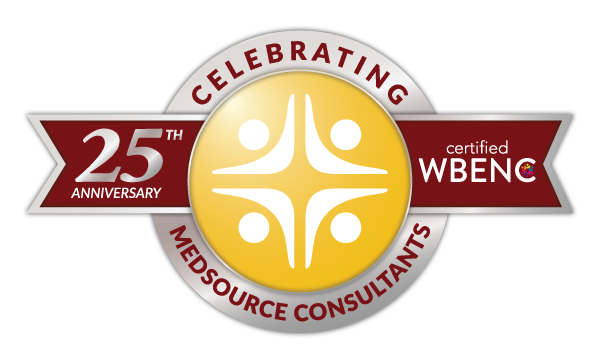Innovators Innovating Healthcare On their Own Terms
Scott Rupp

As Plato said, necessity is the mother of innovation. Some innovation is outstanding and monumental – penicillin, organ transplantation, aspirin, x-rays. Some medical innovation is remarkably simple; driven by love of others and concern for those who need care. Some medical innovation is driven by sentiment and love while other innovation is incredibly functional; serving a simple purpose, like improved safety and enhanced communication in the care setting.
One noteworthy innovative campaign is known as the #TheatreCapChallenge. Another is an effort called #HelloMyNameIs. But there are other innovative efforts by those in healthcare that don’t include hashtags.
Hashtags help
Modern medical innovation doesn’t require a hashtag, but they can help.
Both of efforts mentioned above are being promoted by the PatientSafe Network, a nonprofit developed by frontline healthcare staff to improve patient safety at every level of the patient journey. It’s committed to improving patient safety through transparent review of “medical mistakes and the generation of transparent networked projects.” It advocates for systems to minimize medical error, and implementing interventions that don’t lead to adverse events when medical errors occur.
It was started by Australian anesthetist Rob Hackett. He started the #TheatreCapChallenge to reduce confusion of care teams during surgical operations. Hackett’s medical innovation was simple — scrawling his name and position on his scrub cap: “Rob … Anesthetist”.
Something so simple eventually led to a worldwide “aha” moment for thousands of doctors and caregivers. Writing each person’s name and position on the care team helps avoid mistakes and reduces communication error that contribute to rising adverse events for patients, Hackett said. “It has been adopted around the world with studies from the US and UK demonstrating how this simple idea can decrease human errors in healthcare.”
When the movement first kicked off, Hackett’s colleagues didn’t take him seriously, and jokes and guffaws ensued about his inability to remember his name and job. A year later, though, it’s a different story. Hackett and his proponents say that having their names written on their caps can save time in life-and-death situations, and can reduce delays and misidentification that occur when clinicians can’t recognize or can’t remember the names of their colleagues in the operating theatre.
“I went to a cardiac arrest in a theatre where there were about 20 people in the room,” Hackett said. “I struggled to even ask to be passed some gloves because the person I was pointing to thought I was pointing to the person behind them. It’s so much easier to coordinate when you know everyone’s names. It’s great for camaraderie and it’s great for patients as well.”
Hackett says surveys show increased name recall among staff from 42 percent to 85 percent, and increased name and role introductions during the surgical safety checklist from 38 percent to 90 percent because of his movement. A Stanford University study says there is increased communication and theatre efficiency when names and roles are written on the caps.
Hackett’s effort doesn’t stop there. He’s pushing further, suggesting those who participate in his movement switch to reusable caps rather than disposable ones. “A 20-theatre hospital will discard more than 100,000 disposable caps every year. The caps are made from viscose – a substance whose production is particularly harmful to the environment,” he said. Doing so also can reduce hospital expenses by several thousands of dollars.
Hello, my name is …
The #TheatreCapChallenge coincides excellently with the #HelloMyNameIs campaign founded by Dr. Kate Granger, who died of cancer in 2016. Dr. Granger raised similar issues as Hackett’s campaign after a hospital stay for post-operative sepsis in 2013. During that stay, many of the staff responsible for her care didn’t introduce themselves and missed the opportunity to strengthen relationships and build trust between staff and patient, she said at the time.
Granger’s effort encouraged hospital and healthcare staff to introduce themselves to their patients. Prior to her death, she shared some thoughts about her movement. “As a doctor specializing in the medical care of older adults, I already had a strong, person-centered focus, she wrote. “When I was thrust onto the patient side of the bed, I became even more convinced how important it is that we communicate with patients well, and how vital compassion is in the delivery of care. I have spent just over eight months of my life in hospital, and met hundreds of healthcare professionals. Most of these people have been utterly amazing, but sometimes, care and communication have failed to meet my expectations.
“My own personal and professional values have all culminated in the #HelloMyNameIs campaign. The idea sprang out of a conversation I had with my husband in August 2013. I was in hospital with post-operative sepsis, and venting to Chris about how hardly anyone had introduced themselves to me since my admission. I’d also observed that, whenever someone did offer a friendly introduction, it made me feel better; it made me feel human. That evening, Chris simply told me to ‘stop whining and do something, darling!’ So, we did.”
The idea became a hashtag and a social media sensation. The campaign caught fire and has helped start millions of conversations since, even transcending Granger’s death by years. Celebrities (Richard Branson), politicians (David Cameron, former prime minister of Britain) and others have pushed the campaign to their followers.
“The simplicity of the campaign’s values was being heard and appreciated by the whole spectrum of people working in healthcare,” Granger wrote. “By introducing yourself to a patient, you are acknowledging them as another human being and making a connection with them. Introductions lead to therapeutic relationships, and help patients build trust.”
Innovation. Necessity based on human need. Leading to better care, perhaps more powerful and stronger connections, even when the outcomes are not wonderful, as Granger’s story proves.
Other innovators
These are just two examples of innovation in healthcare, made possible by the power of the web and the ability to generate instant awareness. There are others making a difference, of course. Even if only in their own smaller worlds.
Mary Ann Block, DO, PA, a physician who has treated children diagnosed with autism and ADHD for 30 years, grew frustrated with the lack of treatment options. Most of the children she treated, she observed, had processing problems, which prevented them from functioning in their environments. So, with her experience and through her expertise, she developed what she now calls the Clarity Chair to help with those brain processing problems. The technologically driven, sensory stimulating chair now helps people develop better focus, listening skills, improved behavior and stronger communication skills. Treatments are available across the United States at several clinics. The results are tangible, she said; and, perhaps, unprecedented.
Another innovation, the Little Zebra Fund, takes on genetic disorders. The San Francisco nonprofit helps those without proper coverage or the financial means to receive genetic testing. Launched on Rare Disease Day 2019 (February 28), the organization serves patients that are seen by a geneticist or genetic counselor at one of several institutions in the Bay Area. Little Zebra Fund provides funding – through an application process – to individuals who are seeking a diagnosis for a rare condition. Even if testing does not lead to a diagnosis, the patient is one step closer to potentially finding an answer to the causes of their condition.
Under fiscal sponsorship of the San Francisco Public Health Foundation, the Little Zebra Fund was founded by two doctors who hope to help resolve a health inequity facing many of our undiagnosed patients. “We created Little Zebra Fund to cover the cost of clinically indicated genetic testing for patients whose insurance denied coverage,” said Gretchen Kissel Foskett, M.D., a medical geneticist and co-founder of Little Zebra Fund. “We were disheartened that patients without financial means were frequently denied access to a potential diagnosis that could facilitate targeted and cost-effective care, screening for potential complications, identification of other affected family members and/or attainment of a relevant treatment or cure.”
The fund’s daily mission is to provide universal access to clinical genetic testing by eliminating the financial obstacles, making those powerful impacts a reality for every patient in need. A patient can develop a targeted care plan, and begin to understand their potential health complications because of the testing. When the previously undiagnosed condition is identified through genetic testing, appropriate surveillance can be initiated to avoid further complications, and patients can pursue the resources they need to manage their care, Foskett said.
For one life, the world
Medical innovators do not always create programs that go viral or gain a worldwide following. Most medical innovators don’t save countless lives or found nonprofits that assist an underserved community. Some medical innovators are not trying to change the whole world, just the world of one life.
Liz Smith, the senior director of nursing of Boston’s Franciscan Children’s Hospital, fell in love with a newborn, Gisele. The child was born weighing less than two pounds and with neonatal absence syndrome (NAS), a consequence of being exposed to narcotics during pregnancy. She spent three months in the NICU on ventilator support and developed an oral aversion before she was transferred to Franciscan Children’s.
Gisele had no visitors during her time at the hospital except for 45-year-old Smith, who herself had recently learned that she was not a good candidate for IVF. Smith had always wanted children, but career and life had other plans. Smith said she instantly bonded with Gisele and visited her frequently through all her complications and setbacks. “I went to see her every day,” she said, “It was kind of my reward after a long workday.”
The state claimed custody of Gisele in October 2016, shortly after her arrival at Franciscan Children’s. Gisele’s birth parents were facing an uphill battle of addiction and were not fit to care for a child. So, when the need for a medical foster home arose, Smith agreed to care for the child at home, who was then 9 months old. At first, when Giselle was out of the hospital, her parents had supervised weekly visitations, but according to the hospital’s blog those soon became infrequent. Ultimately, the goal for the child went from reunification to adoption.
After two years, Smith legally became Giselle’s mom. Smith said that when the family court judge entered the courtroom on their adoption day, Oct. 18, 2018, he said: “When a judge walks in the room, everyone stands out of respect. But today I stand in respect for you, Liz, because you deserve the respect from this room.”
Developmentally, Gisele has thrived under Smith’s care. While she still receives her nutrition through a feeding tube, Smith has helped her start eating a few solid foods, like pizza and avocados. Gisele is on her way to becoming a completely healthy little girl with a bright future thanks to a caregiver with an innovative, and open, mind.
Necessity breeds innovation
The common theme in each of these stories is, as Plato said, that necessity breeds innovation; driven by love of others, providing care for those is need. Some innovation is functional; while other innovations are, well, sentimental.
Nevertheless, the individuals highlighted here are helping to innovate healthcare, in their own specific ways, on their own terms. From creating hashtags to technology, to starting nonprofits or adopting a child in need – each of these stories prove that by changing the way members of the medical community think about small details, big change can occur – for one, for all.
Partner with MedSource Consultants today!
MedSource Consultants connects the top medical talent in the field with new opportunities in healthcare. Contact us today to start the conversation.

